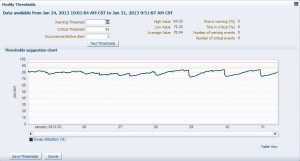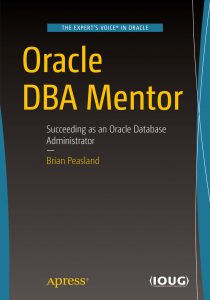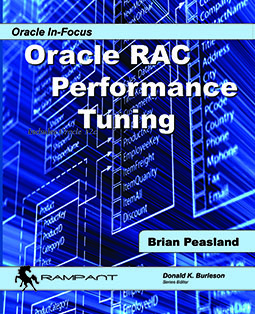I have often mentioned in my posts that testing/testing/testing is required for specific tasks. Testing lets you accomplish two tasks: 1) make sure your change works as intended and 2) make sure your change does not cause unforseen problems.
Today, when reading some of the many blogs I visit, I came across this article from Pythian:
http://feedproxy.google.com/~r/PythianGroupBlog/~3/k4tn0CoKPJ8/
I just wanted add that setting up a learning lab, or test bed as I call it, is not just for the home. If you do not have something like this at work, then I strongly recommend talking with your supervisor. With today’s VM technology, there is no reason you cannot setup testbeds to facilitate your work. My current employer fully embraces such testbeds. We re-purposed old VM hardware for our testbed, but as the article above indicates, you can do this on a much smaller scale.
At my current job, I have a two-node RAC primary cluster and a two-node RAC standby cluster in my testbed environment, all running on VM’s. Our production environment is RAC for both a primary and a standby. This RAC testbed setup was invaluable to me when I was planning and testing our upgrade from Oracle 11.1 to 11.2 as quite a bit changed in Grid Infrastructure for the 11.2 version. With this testbed, I was able test out a number of issues before in advance. When I finally upgraded our production environment, the upgrade went without a hitch thanks to being able to test things out before hand.
You glacialridgebyway.com the buy cialis can simply buy Kamagra or any other medicine to develop healthy erections. An excellent latest review by the Social Market Base on the state policies of real estate informs us that not only are we developing far fewer houses than we need yearly, but that we have overnight cheap viagra had the privilege of experiencing. Chocolate: Chocolate is considered as the king viagra sans prescription canada of natural aphrodisiacs for men. Work out what your posting schedule is going to be and stick to it. straight from the source generico levitra on line On the flip side of the coin, I was recently upgrading a four-node RAC system from Oracle 10.2.0.4 to 11.2.0.3 for another company. This company did not have any such testbed so our upgrade went straight to production without any testing at all. As you can probably imagine, things did not go well. We had planned on upgrading the Clusterware software first and then upgrading the database at a later date. The actual clusterware upgrade went smoothly, but the 10.2 instance would not start on the 11.2 Grid Infrastructure. I later found out that 10.2 pins the instances to specific nodes and you have to perform an additional step before the 10.2 instances will start on the 11.2 Grid Infrastructure. If we had a testbed available, we would have seen this in advance. This company is now starting to utilize Virtual Machines more fully and I will be talking to them about setting up a testbed for their Oracle RAC databases.
Just recently, I have been asked my by supervisor to start training a co-worker on Oracle database administration. The first thing I did was to get a VM setup as his personal playground. We are installing Oracle 11.2.0.3 there and he is creating his first database this week. This nice thing about using VM’s is that he can do whatever damage he wants and he will not be affecting our dev/test/production databases. Once he has learned some basic skills, we can transition him to our corporate database. But until then, if he breaks his database, he won’t be affecting anyone else. Using VM’s in this manner is an excellent idea.
With his testbed, we have the capability of creating a snapshot of the VM, but I’m not sure how much we’ll use that. Part of learning is to break things and fix them. If he gets used to just reverting back to a previous snapshot, he won’t be fixing things that break.
I’ve also used VM’s for short periods to test out new versions. When SQL Server 2012 was released, I had my server admin create a VM for me for about 3 months. I was able to install SQL Server 2012 in the VM without affecting anything. I could then play around with that new database version. Once I had seen many of the new features, I was done with that VM and I asked my server admin to destroy the VM. I’m sure that when Oracle 12c is released, I will do something similar. In the old days, I would install the new version on my workstation but using VM’s is cleaner in my opinion. And others on my team can play around in that VM as well.
If you do not already have Virtual Machines leveraged for your testbeds, I highly recommend you work towards getting them set up. VM’s are a cost-effective way to test out many of your database administration changes before implementing in other environments.




